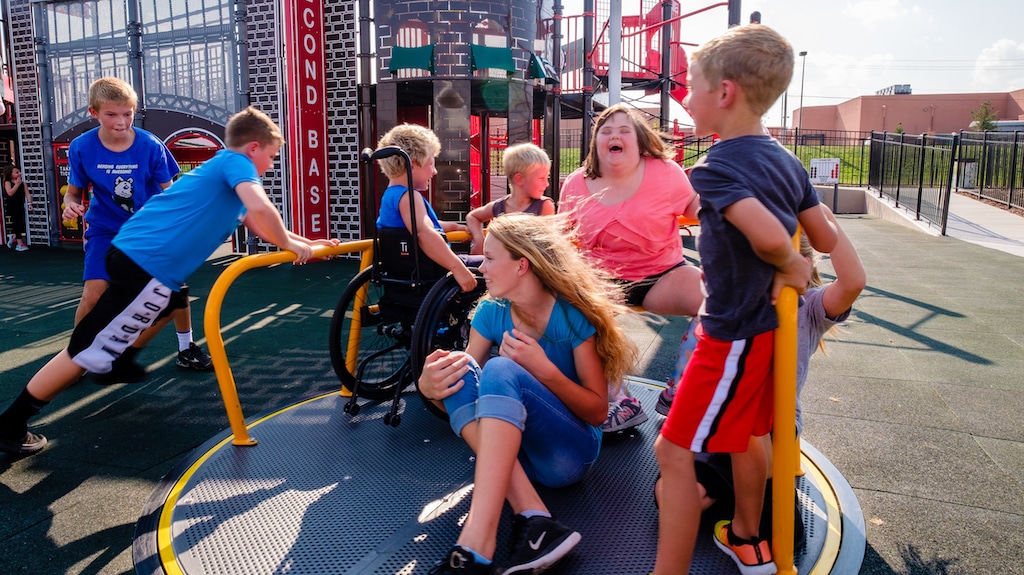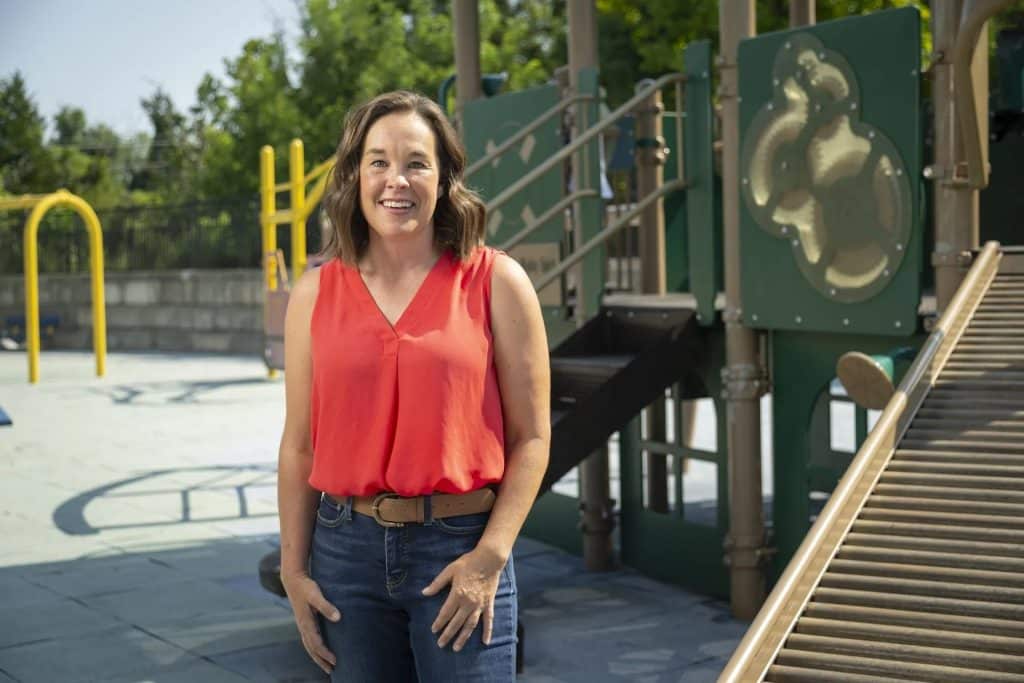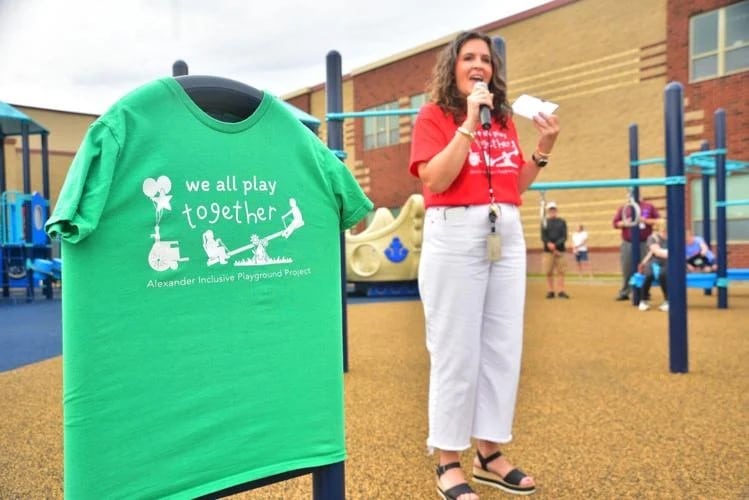Teaching Your Child About Disabilities and Different Abilities

5 Tips to Raise More Inclusive Kids
You may have said or done something in front of your child thinking they did not notice – until they copied it. Young children soak up the actions, words and ideas of people around them like sponges. Other times, they blurt out bold questions unexpectedly, such as: “Mom! Why is that big kid sitting in a chair with wheels?!” Embarrassing though it may seem, these questions create important opportunities for parents to talk to their children about disabilities.
The natural curiosity of your child can be channeled into acceptance and understanding of people from diverse backgrounds, including peers who have a disability. Here are a few suggestions to help you teach your child about inclusion.
1. Lead by Example and Model Inclusive Behavior
If you want your child to be inclusive, you should be incorporating those values into your own behavior. Otherwise, you run the risk of teaching them to “Do as I say, not as I do.”
The first thing to consider is the language you use, particularly when speaking about people who are different from you – whether they be people of a different size, race, religion, socioeconomic status, age or ability. To ensure that you are modeling inclusion in your language, remember to:
- Use “Person-First” Language.
Person-First or “People-First” Language refers to the order of words that are used to describe a person. For example, instead of referring to someone as “Epileptic,” it is preferable to say “a person with Epilepsy.” When utilizing Person-First Language, differences become a secondary adjective, instead of the defining characteristic. This language focuses more on the individual and their value as a person. - Eliminate Use of the R-Word.
Hopefully, you and your family have already taken this step! The word “retarded” is an outdated and offensive term that your child may overhear and even repeat. Have a conversation with your child about why this word is so hurtful, and why it is important to you that they refrain from saying it. Then, you can both take a pledge to help educate others about ending use of the R-word whenever you overhear it. - Make Helpful and Gentle Corrections.
As your child is learning about the world around them, they will make honest mistakes. If your child makes an insensitive or thoughtless comment, it is important to avoid any knee-jerk reaction to scold them. The best thing to do is to start a conversation. “I’d like to talk about what you just said,” will be much more constructive than saying “Don’t call them a ‘weirdo’ ever again!”
2. Embrace Similarities AND Differences
Children with disabilities are children just the same. As a parent, you can help your child understand that a classmate who looks or talks differently than them probably also likes superheroes, cookies and playing outside. When we focus on what we have in common with others, we can build meaningful connections.
While similarities can help people build common ground for a friendship, it is also important to celebrate our differences! All people are unique. Everyone has something special about them that makes them who they are – not just persons with a disability and persons without. To help your child understand this, take them to a garden and observe all of the beautiful, colorful flowers. How different would that garden be if all the flowers were the same?!
Recommendation: The 2017 movie “Wonder” features a young boy named Auggie who has Treacher Collins syndrome, which is characterized by facial disfigurements. In the movie, Auggie struggles with bullying and making friends in his new 5th grade classroom. This family-friendly film is an important watch for children and parents alike.
3. Diversify Your Everyday Experiences
By making diverse cultures and experiences a common presence in your home, your child will have more opportunities to practice inclusion. You can start by incorporating books that include underrepresented groups, and promote diversity in your home library. You can also have friends of a different culture over to share a meal, such as a Friday Sabbath dinner with neighbors who are Jewish, or a meatless meal during Lent with neighbors who are Catholic.
Because we live in the digital age, the internet can also be a valuable resource for teaching your child about diverse living experiences. The CDC has developed an online interactive tool called Kids’ Quest that uses superheroes to teach children about disabilities in a way that they are able to understand, including:
- ADHD;
- Autism Spectrum;
- Fetal Alcohol Spectrum Disorders (FASDs);
- Hearing Loss;
- Mobility;
- Tourette Syndrome (TS); and,
- Vision Impairment.
Kids’ Quest also provides information for parents on specific disabilities, and how to help your child understand them.
4. Have a Serious Conversation About Bullying
Children with disabilities are much more likely to be bullied than their peers. However, research indicates that bullying is reduced by 57% when a classmate or peer intervenes. By educating your child on how to respond when they observe someone being bullied, your child can help be a part of the solution. More importantly, your child is helping to make the world a safer, friendlier place for everyone.
Very young children may not understand that a disability is not a sickness. Furthermore, they may think that a disability is something they can “catch,” like the flu. This train of thought can lead to bullying behavior, even if just as social avoidance. If you notice that your child is hesitant to approach someone who looks or acts differently than them, this is a great opportunity to have a meaningful conversation.
Recommendation: Stopbullying.gov has several resources to engage parents and youth
in the mission to prevent bullying. Share them with your family and parent-teacher organization today!
5. Facilitate Inclusion During Play!
Play is an integral part of a child’s learning and development. However, not all play areas are designed for children and caregivers of all abilities. By participating in play at a space that is inclusively designed, everyone wins!
Every child deserves a space where they can engage freely in play. Unlimited Play playgrounds are a space where social barriers are broken down, imagination can run wild, and lasting connections are made. View our playground roster to find an inclusive playground in your community and plan your playdate today.
Unlimited Play is Building a More Inclusive Tomorrow
By starting a dialogue with your child about disability and inclusion, you help build a future where people with special needs are not viewed by their perceived inabilities – but celebrated for their strengths. Unlimited Play has been on this same mission for more than 15 years: To help provide a space where limitations are forgotten and differences are celebrated.
Unlimited Play is a 501(c)(3) nonprofit organization that helps to plan, design and build inclusive playgrounds nationwide. Through 15 years in operation, Unlimited Play has garnered the unique expertise in developing inclusive playgrounds that serve all members of the community.
To learn more about building an inclusive playground in your neighborhood, contact Unlimited Play today!


